Chris Baty's Blog, page 48
November 4, 2020
30 Days, 30 Covers 2020: Day 4

It’s Day 4 of 30C30D! And take a look at this amazing cover designed by Christopher Simmons from the YA novel by
Thainá
Fernandez!
Manual do Primeiro Encontro Depois da Vida
English Title: Manual For The Afterlife’s First Date
Caroline is a teenager who feels invisible for as long as she can remember. Her father abandoned her and her mother when she was very young and since then she has just lived in the backstage. Literally – she is a theater kid. When the ghost of a young actor appears to her, she feels the urge to come out of the backstage and step into the spotlight. More and more involved with the boy, she decides to help him live the dream of starring in a play that he didn’t have the chance to perform and in the process ends up discovering things about herself that she didn’t think possible.
About The AuthorThainá Fernandez is a former biologist, but her heart has always belonged to the arts. She loves to read cute stories about characters living the most embarrassing period of life - adolescence. When she’s not reading YA books, she’s writing YA stories, taking pictures of your cats, doing crafts, drama classes or singing. She’s currently pursuing a postgraduate degree in Creative Writing - a challenging experience that is encouraging her to practice and develop her writing skills.
About The Designer
Christopher Simmons is a designer, author, artist and occasional hamburger blogger whose work has been exhibited in museums and galleries ranging from The Hiroshima Museum of Contemporary Art to the de Young Museum to The Smithsonian Institution. He has written four books and designed considerably more.
November 3, 2020
#WriteTheNextChapter

Dear Writers,
Earlier this year, we launched #StayHomeWriMo in response to the pandemic and the lockdowns that many of us in the world were experiencing. #StayHomeWriMo offered prompts and suggestions to care for your mental, creative, physical, and social well-being as we sheltered in place.
As we prepare for the American elections, a potentially long wait for the results, and the uncertainty about what will follow; and as many people across the world are once again being asked to stay home to stop the rising spread of COVID-19, we’ve decided to launch #WriteTheNextChapter, in the spirit of #StayHomeWriMo.
We’ll send regular prompts: one for Creative Action—to give those of you finding comfort in writing a boost—and one for Community Action—with action items for how to lift up and support those around you, even from a distance. Whether you’re participating in NaNoWriMo this year or not, we hope you’ll find these emails supportive and galvanizing during a time that might be full of uncertainty, anxiety, and loneliness.
We don’t know what comes next. But we do know that whatever happens in the weeks and months to come, there is still work to be done, communities to support, and stories to be told. By standing together and lifting each other up, we can #WriteTheNextChapter.
With you,
The NaNoWriMo Team
Today’s #WriteTheNextChapter prompts: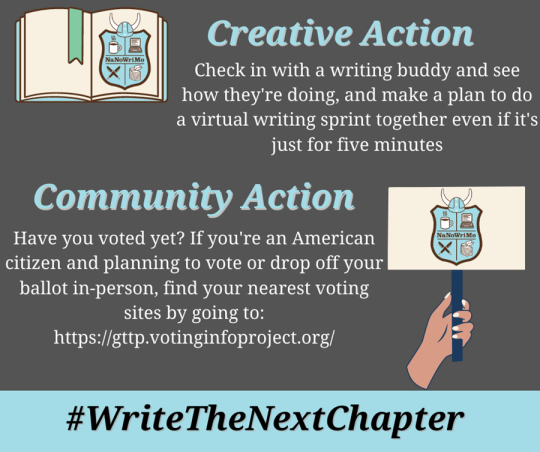
Image description:
A grey and white graphic with an open book and a hand holding a protest sign with the NaNoWriMo logo on each. Text reads:
1. Creative Action
Check in with a writing buddy and see how they’re doing, and make a plan to do a virtual writing sprint together even if it’s just for five minutes
2. Community Action
Have you voted yet? If you’re an American citizen and planning to vote or drop off you ballot in-person, find your nearest voting sites by going to: https://gttp.votinginfoproject.org
30 Covers, 30 Days 2020: Day 3
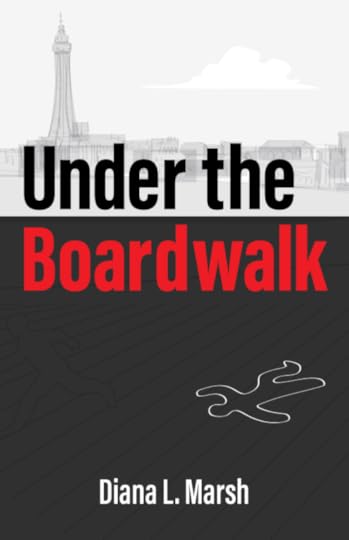
Today’s cover was designed by Prescott Perez-Fox based on the Mystery Novel by NaNo Participant Diana L. Marsh!
Under The Boardwalk
Unfortunately, in bright and loud Blackpool, what’s going on under their famous boardwalk is anything but fun. As bodies begin to pile up and fear permeates both the locals and the tourists, it may be up to one bartender, and her ghostly guide, to bring the terror to an end.
Can they stop the dark things happening out of the sun?
Who doesn’t love a good paranormal mystery?
About The Author
Diana Marsh spends her days as an administrative assistant with the State of Kansas, and her nights plotting the torment and agony of fictional characters. She has put the latter skill to use as a participant in National Novel Writing Month since 2002, an activity that has given her 18 years of fun and eight completed novels (and 10 works in progress that might eventually end someday). She also proudly serves as co-Municipal Liaison for the USA::Kansas::Topeka region.
Prescott Perez-Fox is an art director, brand strategist, speaker, podcaster, and teacher, recently transplanted to Phoenix, AZ. Now a Lecturer at Arizona State University, he brings his knowledge, passion, and a few hard-fought lessons to the next generation of multidisciplinary designers. His practice focuses on integrated branding and communication design, connecting brand strategy with identity, and deploying across multiple modern touchpoints, from packaging and in-store signage, to websites and apps.
November 2, 2020
3 Ways To World-Build
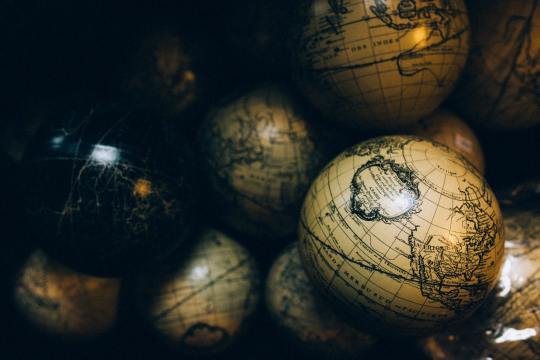
When you’re starting a new writing project, you’ll probably do a lot of exploration of the world you’re creating. Whether you know a lot about your setting already or it’s all just a question mark on a big blank map, here are some tips from participant Victoria Schroeder for building your novel’s world:
1. Draw a map of your world.When I was fourteen, I spent a hot summer week drawing a map.
I took a blank sheet and said “I am going to draw the best map anyone has ever seen. There are going to be borders. There is going to be one big river.” I drew the map (and let’s just say it needed work). Then I remembered that countries have people. “Huh… country in the north means it’s… cold? So… what do I know about Russia?” I followed that up with “I will use my history knowledge to develop a world for a story! These’ll be the best countries ever!” Six years later I’ve cared for that map like a rosebush; prune the stuff that’s not working, water it, and let it grow as it pleases.
2. Draw a map of your characters.A separate map took longer because it was built around someone. This character was, H, was originally designed as someone’s love interest, so she was inserted into a strong, well developed group. I wanted H to be more than “the love interest.” I had questions and H made me think. How do I make her interesting?
H’s father became a spider-monster-thing of unknown origins. One day, when H was traveling with her friends, he stole her away. But I didn’t like that. I wanted there to be more to him. What do I want from him?
The spider monster became a god with a pantheon, with a role that sent him to spy in the country where H’s mother was. Why was he spying? There’s a… neighboring country that once took slaves and this pantheon wants to keep it from happening again? Yeah, I like that!
Three years later, I have five countries, four pantheons, a complicated history, and everything in between. I drew the map a year ago. It has big rivers too.
3. Use the stories you love as inspiration.For my very first “real” story, one of the main characters was inspired from a fantasy series I loved. (David Edding’s The Belgariad, if you’re curious.) He ran away to Earth, where he became a 16th century pirate (with plenty of historical inaccuracies. I wanted to write about pirate friendships with a hint of gay.) That was where I started my world building journey. What do I love? What do I want to write about?
At the end of the day, there is no “right” way to world-build. You can spend a week drawing maps, you can borrow from real world cultures or your favorite media. You can take your character and look at what you want from them, what you think they need. You can borrow from an old story, brainstorm with a friend or six. You can look at other writers - what have they done well? What have they not? There is no shame in your source of inspiration. Make a world out of a sandwich if you want.
The cultures around us are combinations of their people, the world around them, and their circumstances over hundreds of years. There’s no harm in borrowing from them to inspire you. You don’t have a thousand years to cook up a culture. You’ve got a few minutes during your lunch break or half an hour before homework.
The most important thing is that cultures are always growing. Your worldbuilding won’t be perfect the first time, and it may never be. What’s important is that you keep striving to make it better. It should make you happy. Make it so you want to read the story you write about it. Make it so it’s something you can write every day.
When you’re ready?
Draw a map, and see where it takes you.

Victoria Schroeder is a university student working towards a double major. She’s loved writing since forever and is hoping to one day become an author of a non-fiction series, hopefully multiple. While she cooks up her longer works she’s happy to share fanfiction or little drabbles of her own. When she’s not writing, she’s scrolling Tumblr, cooking, drinking tea, or listening to K-pop. Probably all four at once.
Tumblr
NaNoWriMo
Archiveofourown
Top photo by LB on Unsplash.
30 Covers 30 Days 2020: Day 2

It’s day two of 30C30D and that means it is time for a new cover. This cover was designed by Cookie Redding based on the Historical Fiction novel Zojan Iaulu by Justiina Kaleva!
Zojan laulu
Zoja is one of the Karelian evacuees fleeing from Karelia during Finnish Continuation war to other side of Finland. She finds comfort with her dead mother’s violin and music, hence the name Zojan laulu (Zoja’s song in English). In their evacuation town she and her family get a lots of hate from other people, but kind Christian family takes them in even though evacuee family is Karelian pagan. Living during the war and in the aftermath. Spoiler: in the end, Zoja dies of pneumonia at young age.
About The Author
Zoja and her family are Continuation War evacuees from Karelia, sent to Finland’s Southern Ostrobothnia. Along their host family, they will suffer both consenquences of the war and clash of two different cultures. This novel is loosely based off of her own experiences.
Cookie Redding is an artist and designer living in south central Pennsylvania. She works with a variety of materials and likes to incorporate them all into her work. She currently is also a faculty member at the Pennsylvania State University within the School of Visual Arts, World campus where she teaches art and design. She loves when students have their “ah-ha!” moment with their work.
November 1, 2020
30 Covers 30 Days 2020: Day 1
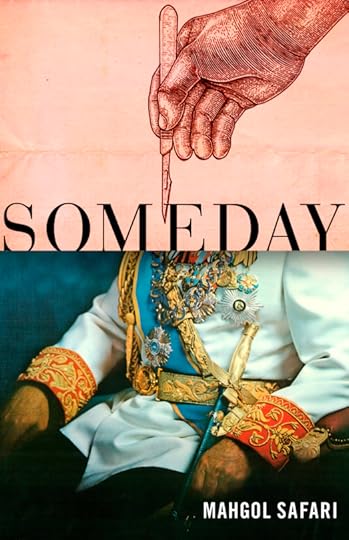
It’s official, 30C30D has started and to kick it off, here’s our first cover designed by Patrick King based on the Literary novel Someday by NaNo Participant Mahgol Safari!
(For those of you who don’t know, 30C30D stands for 30 Covers, 30 Days in which 27 Wrimos and 7 YWP Participants get the chance to win a professionally designed cover! We’ll be posting a cover a day throughout November, so make sure to check them out!
SomedaySomeday is based on the life of a retired Iranian surgeon living in Paris in the 1990s who is irreversibly altered when a truth is revealed about his past life in Iran. This revelation shakes the foundations of several families and incites a captivating journey into the turbulent history of Iran in the 20th century and how it shaped human connections in a rapidly evolving society.
About The AuthorMahgol is a 29-year-old Iranian physician based in Paris. As a first-time novelist, she drew from her own experience growing up between Dubai, Tehran, and Paris, and how class conflict has historically molded these societies. She spends her free time developing her skills as a streetwear designer & self-proclaimed School of Rock connoisseur
About The DesignerPatrick King is a designer and painter living in Brooklyn, NY. He is also the founder of TypographyShop.com, through which his typographic apparel and posters have sold to designers in 45 countries. He is a recipient of a Pollock-Krasner Foundation grant for his paintings and his work hangs in numerous public and private collections. King has taught copywriting at Temple University and graphic design at Philadelphia University. He studied design at Minneapolis College of Art and Design and painting at Pennsylvania Academy of the Fine Arts.
King’s design work can be seen here, his paintings here and you can visit TypographyShop here.
October 30, 2020
Join Us for the Biggest NaNoWriMo Kick-Off Ever!

It’s time to listen to that voice whispering “Yes, you can” in your ear, bump elbows with the unknown, and fling open the windows of your imagination to let in gusts of inspiration.
Together, we are embarking on a month-long incantation that just might produce magic. We are creating a memory that will last forever.
In other words, it’s almost National Novel Writing Month.Over the next 30-odd days, you are bringing a gift into the world—the gift of your voice, your courage, your commitment. Announce your NaNoWriMo project today to get prepared to write on November 1!
To help fortify your noveling commitment, NaNoWriMo is putting on a special Double-Up Donation Weekend: three full days (Oct. 30—Nov. 1) of preparation and writing to kick off November, as well as raising crucial funds to keep spreading the joy of creativity around the world.
Help us kick off NaNoWriMo with a bang this weekend!
October 29, 2020
How to Plan a Novel (By Not Planning It)

Every year, we’re lucky to have great sponsors for our nonprofit events. Novlr, a 2020 NaNo sponsor, is the smart writers’ choice for novel writing software. Today, Novlr Community Manager Crystal Lynn Kamm shares some tips for all the pantsers out there who want to get ready to write their NaNoWriMo novel without actually planning it:
NaNoWriMo 2020 is fast approaching and writers everywhere are working hard on their novel ideas. Some of you have already meticulously planned everything you’re going to write next month, while others have decided it wing it by sliding into their computer chairs on November 1st without a single plan. And probably most people are somewhere between these two polar opposites. Which type of writer are you?
I’ll be honest, I’m the kind of writer who likes to plan for success. I’ve done NaNoWriMo (and Camp NaNoWriMo) quite a few times, but I find that the years where I come in with a plan, I do better.
Before you get too worried, “a plan” doesn’t have to be as big of a deal as you might think. Many writers thrive off the understanding that the novel unfolds as it will, making pre-planning difficult. As a self-proclaimed “organized pantser,” I would completely agree with that sentiment. (Side note, have you heard about the difference between planners and pantsers, a.k.a. one who “flies by the seat of their pants”?)
Here are some methods of writing planning that I love to employ before I get started on a big writing project:
OutlineWhen people talk about planning, they almost always mean outlining. I don’t know about you, but I don’t like outlines at all. They are very restrictive! But, that being said, they can be helpful at times. If possible, I recommend at least planning out the main plot points of your novel. Identifying what the characters’ goals are, what big things happen, and how they’re ultimately resolved can save you from a lot of aimless wandering at the drafting stage!
BrainstormWhat if you don’t know what your main plot points are? That’s a completely valid issue, especially if you’re a pantser like me. I sometimes like to brainstorm ideas for what those plot points might be so that I can play with a few scenarios during the drafting process and see which ones work best for my characters.
Writing exerciseGetting to know your characters is one of the best ways to figure out what they would or wouldn’t do. Once you know that, a whole new assortment of possibilities will show up for your novel’s plot. Follow @novlrtweets on Twitter to get some great interaction and writing prompts for helping you dig deeper into your fiction!
Freewrite or journalSometimes prompts take your writing a direction that you weren’t intending on going with your novel and freewriting is a better choice. Freewriting or journaling about your novel can really help you to clear away the cobwebs and dig into your writing process. I like to free write about my novel almost every day, even if it’s just for a few minutes. I write about my struggles, my plot holes, my character frustrations, anything that’s on my mind. Sometimes I get life-changing epiphanies, but let’s be honest, that’s not the norm. Just working through the questions will often give you a change of perspective and the added bit of motivation you need just to keep going.
Story bibleIf you’ve really got some time on your hands or want to make sense of a very complicated world that you’re building for your story, creating a “bible” can be an incredible exercise in organization. The idea of creating a “bible” for a story is a system used in TV show writing. A bible will contain a bio and picture for every character, plus a breakdown of what motivates them and how they fit into the plot, every setting, and every unique system in the story. This can be an essential element in high-concept stories where characters are using magic, fighting powerful enemies, engaging in extremely technical science, or moving around in a complex world with lots of unusual settings.
The best part about all of these preparatory exercises is that they don’t actually have to be done first. You can “prepare” for your novel at any stage of the writing process, whether you’ve only written a page or you’re in your third full draft. Be sure to let me know if you’ve tried any of these methods before and whether they’ve worked for you! What methods of novel prep do you swear by? I can’t wait to hear from you in the comments!
Try NovlrNovlr has chapter organization and separate note organization so you can write your thoughts down whenever they come to you and manage it all in one place. Sign up for a free two-week trial of Novlr and use the 40% off promo code when you decide to subscribe: gMR3xpnR.
Crystal Lynn Kamm is Community Manager for Novlr, the leading online writing tool. She is a professional writer and novelist; passionate storyteller and prolific NaNoWriMo participant (and winner!). She’ll be working on her novel right alongside all of you this year. Follow her progress and more Novlr advice and resources on NaNoWriMo, Twitter (@novlrtweets), and Instagram (@novlrofficial).
Top photo by Ferenc Horvath on Unsplash.
October 28, 2020
Finding Inspiration In Strange Places

There is no such thing as a right and a wrong way to be inspired. Inspiration can come from just about anywhere and it can come at any time. Read about how YWP Participant Shriya Sardeshpande finds inspiration below. Who knows, it might just inspire you!
I have drawn inspiration for room decor from the label of a shampoo bottle, of all places. And as interesting as that is, one of the most important elements about it is that the inspiration was fully, totally, and completely unexpected. I find that this often happens in my writing, too.
Once, I was watching a video about advice for teen writers, and one of the things that really resonated with me was: don’t lock yourself away. Try to take a good look at the life around you for a while before you lock yourself in writer mode and make the keyboard (or pen) your roommate. Take in the colors and shapes that you see while on a bike ride. Hang on to the words someone said while they accidentally unmuted themselves on a Zoom meeting. Be an observer.
Seriously though, the amount of inspiration you can draw from places where other people might think there is no inspiration is bizarre. I was attending a school quiz and had decided that I would stick to being my science self. No writing thoughts, nothing. But an idea that came to me during the quiz became the book that I wrote for Camp NaNoWriMo April, and am currently revising it, and making it ready for my beta readers.
As you can see, inspiration can come from many, many places. There’s a story, if memory serves: a Greek folktale about finding luck when and where you least expect it. Writing inspiration is like that too. If you look at conventional places, like prompt generators, then you can often find yourself stuck and feeling forced to write. I find inspiration seemingly randomly. For those of you who can weave a story based off of a prompt picked from any random website, that’s cool! I have never been able to do that. I have, though, started off with a prompt, and ended up somewhere in another galaxy. Either way, it’s perfectly okay. There is no “right” way to find inspiration.
Well, after a lot of rambling, I can safely say that if you choose to be a writer, weirdness is bound to come your way. How you treat it is your choice. But here’s a tip: Embrace the weirdness and make it into an inspiration. Don’t be afraid to say that you were lying upside down on the sofa having a staring competition with a pigeon when the idea came to you. And write the book, okay?
Shriya Sardeshpande is a 14 year old writer from Pune, India, with a passion from quirkiness. She is a huge fan of Harry Potter, Percy Jackson, and The Hunger Games series. She also loves to sing and learn new languages. She is currently adventuring with a romance novel and Finnish. Follow her on Tumblr.
Top photo by Mika Baumeister on Unsplash.
October 27, 2020
Pro Tips from a NaNo Coach: Writing During (and About) Times of Trauma
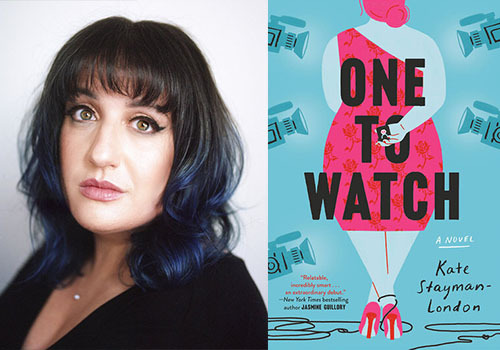
NaNoWriMo can seem like a daunting task sometimes, for NaNo newbies and veterans alike. Fortunately, our NaNo Coaches are here to help guide you through November! Today, author Kate Stayman-London is here to share some advice on getting through the particular challenges this year poses:
For me, there’s no better way to process difficult experiences than to write about them. From small annoyances to fraught relationships and more serious traumas, I find that working out my emotions in fiction has a way of helping me find closure in real life.
But this year, writing about trauma is different. We’re all living through collective trauma: a pandemic, separation from our loved ones, profound uncertainty about our future. That’s a lot for anyone to deal with — is it really wise to add writing about our personal traumas to the mix?
For lots of writers, the answer is, “HELL NO.” And that’s totally okay! I believe that first and foremost, writing should be a source of joy. If writing about traumatic topics feels more painful than cathartic for you right now, I completely support your right to write about anything else. Maybe this is the right time to explore a fantasy world, a fabulous romance, a far-off galaxy, or anything that feels like an exciting vacation for your brain.
But for some writers (like me!), the most rewarding our work ever gets is when we’re grappling with issues that have impacted our own lives, and taking our characters on emotional journeys that we’ve been through (or are still undergoing) ourselves. If that’s you, here are two questions that I find helpful to consider before writing about potentially traumatic topics:
1. Do you feel like you’re in a good emotional place to take on this topic?I like to check in with myself before diving into any potentially traumatic scene, especially this year when I have so much less emotional capacity than usual. Sometimes my answer is, “nope, I cannot write about topic X today.” And that’s fine. My emotional health is a lot more important than my word count; I can always come back to that scene another day.
2. Do you have a self-care strategy for days when you’ll be working on emotionally difficult scenes?I like to go on a long walk, play guitar, call a friend, take a hot bath, eat a delicious meal, or open a great bottle of wine to help unwind after a tough writing day. Particularly since I can’t do lots of stuff I normally would (like go out to dinner or over to a friend’s house) this year, I find it empowering to have a self-care plan for days when I know I’ll need one.
During a year when we’ve all expended so much energy to stay physically healthy and safe, it’s easy to forget about our emotional health and safety. Writing a novel is scary and vulnerable to begin with — if you’re going to add emotionally difficult topics to the mix, you deserve to have all the support you need. I hope this post is a good jumping off point. If you have strategies you want to share, let me know! I’d love to see them. Happy (and healthy) writing!
Kate Stayman-London is a novelist, screenwriter, and political strategist. She served as lead digital writer for Hillary Rodham Clinton’s 2016 presidential campaign and has written for notable figures ranging from President Obama and Malala Yousafzai to Anna Wintour and Cher. When not writing or traveling, Kate can be found obsessively ranking Taylor Swift songs, laughing loudly with friends over really good bottles of wine, and of course, watching reality TV. She lives in Los Angeles.
Get in touch with Kate this week on the NaNoWriMo Twitter account or the NaNoWriMo Instagram account!
Chris Baty's Blog
- Chris Baty's profile
- 63 followers



